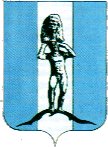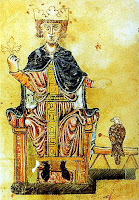Here is a description of the Terra Di Bari from the:
"Penny Cyclopaedia, of the Society for the Diffusion of Useful Knowledge" published by Charles Knight, London, 1835
"BARI, TERRA DI,
One of the fifteen provinces of the continental part of the kingdom of the Two Sicilies. It extends about eighty miles along the coast of the Adriatic from the river Ofanto, the ancient Aufidus, which divides it from the province of Capitanata, to within five miles north-west of Ostuni, which is the first town of the Terra d'Otranto on that side.
Inland the province of Bari extends about thirty-five miles as far as the range of high hills, which, detaching itself from the central ridge of the Apennines, near Venosa, runs in an easterly direction towards the Adriatic, dividing the waters that flow into that sea from those which fall into the Gulf of Taranto. This range divides the province of Bari from that of Basilicata.
Altamura, the last town of Bari on that side, is at the foot of the range. It is one of the most populous provinces of the kingdom; and that strip of it which extends along the sea-coast, and about ten miles inland, is one of the most fertile and best-cultivated countries in Italy. It is studded with a number of towns at a few miles distance from each other, such as Barletta, Trani, Bisceglia, Molfetta, Giovenazzo, Bari, Mola, Polignano, Monopoli, Fasano; and inland, but still within a few miles of the coast, Andria, Ruvo, Nola, Bitonto, Bitetto, Conversano, &c.
Several of these towns have from 12,000 to 18,000 inhabitants, and the rest from 4000 to 8000: the whole population of the province is about 420,000. The interior of the country is much less populous than the maritime districts, vast tracts of it being left for pasture or being overgrown with woods. This part is covered with calcareous hills ; the valleys are susceptible of good cultivation.
Both the Terra di Bari and the Terra d'Otranto are called by the natives Puglia pietrosa, ' stony Puglia,' in opposition to Capitanata, which is called Puglia piana, ' flat Puglia."
The province of Bari has no rivers except the Ofanto, which flows along its north-western border ; but abundant springs are found at little depth underground, and supply water for the purpose of irrigation.
The principal productions of the country are oil, corn, wine, silk, soda, and an abundance of fruit. Oil and corn are the chief articles of export.
The towns on the coast, especially Barletta and Bari, carry on a considerable trade with Trieste, Venice, the coast of Dalmatia, the Ionian Islands, &c. There are some manufactures of linen at Molfetta, and ship-building is carried on in all the maritime towns. The harbours, are only fit for very small vessels.
The climate, though very hot, is generally healthy, except in some spots where the water from the heavy rains is allowed to accumulate and stagnate. A good carriage-road runs along the coast from Barletta to Mola, a distance of forty miles, and this tract of country, called La Marina di Bari, is much boasted of by the inhabitants for its fertile appearance and high state of cultivation. Another and a more inland line of road runs parallel to the first, passing through Andria, Ruvo, Bitonto, &c.
The province of Bari is administered by an intendente, or civil governor,who resides at Bari, but the civil and criminal courts of judicature are established at Trani. The province is divided into three districts Bari, Barletta, and Altamura ; and the whole is subdivided into thirty-seven giudicatore inferiori, having each a magistrate or inferior judge.
BARI, the chief town of the province, is situated on a slip of land which projects into the sea, and is 140 miles E. by N. of Naples, in 41° 8' N. lat., and 16° 55' E. long. It was called Barium (Bapiov, Strabo) under the Romans, and was one of the towns of Apulia. At one epoch it was probably a Greek colony, though nothing appears to be known as to its origin."
Below is a link to the original.
"Penny Cyclopaedia, of the Society for the Diffusion of Useful Knowledge" published by Charles Knight, London, 1835
































